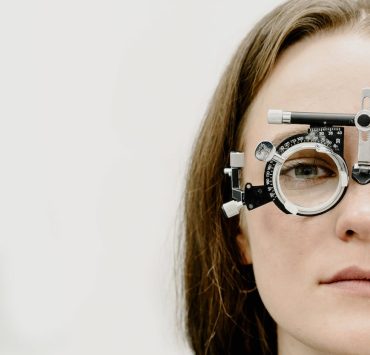Brand Partnership Manager
Disruptive digital tech is ready for its close-up. Several new developments in the digital world are helping small and mid-sized companies penetrate and make headway in the exciting world of beauty products and services. Here’s a glance at the digital transformation initiatives shaking the beauty industry at its foundation.
The True Price of Beauty
It’s a forgivable sin to call the enormity of the beauty product and service market «beyond the pale» because it can be truly shocking. In the U.S. alone, cosmetics companies racked up over $62 billion in 2016.
Combining health with beauty products, covering the full range from vitamins to perfume, stretches that year’s total up to a staggering $93 billion. By far, the largest single segment of beauty product buyers is millennial women, aged 18-34.
That’s a very helpful way to understand buyer commonalities to simplify your marketing strategy. Beauty consumers aged 18-44 use their mobile devices more than any other resource to consume, view, and read beauty content. Around 63 percent of these consumers are comparing prices and checking in with their networks on their mobile devices while they are shopping in-store. Almost 8 out of 10 beauty buyers use their phones to consult online reviews of beauty products while investigating the look and feel of the physical products on the shelves.
The Benefits of Churn
The preference for new players in the beauty industry is huge due to surging demand for variety, originality, and brand cachet. Investors are so confident that they closed 74 funding rounds for beauty startups in 2016, worth more than $424 million in financing for small businesses.
Put it all together, and the market outlook is fabulous.
With a narrow segment definition, immense payouts, high demand for small to mid-sized new entrants, and a content delivery channel literally in the consumer’s hands, penetrating the health and beauty market could be among the most profitable initiatives business leaders pursue this year.

The Digital Community
Like the top brands in the fashion world, beauty suppliers tend to rise or fall on the consumer perception of their brand. High-quality ingredients, environmentally sustainable supply chains, and socially approved manufacturing processes (such as 100% organic, all-natural, cruelty-free, and more) all factor into the consumer’s evaluation of value for preferred brands.
That’s one of the reasons why smaller, digital-first brands with greater market agility and a concentration on social networks have been able to woo purchasing power away from large enterprises in the space. Tarang Amin, the CEO of e.l.f. Beauty, explained how customer experience comes first for his low-priced, cruelty-free cosmetics. His Instagram followers demand it.
Amin specified what digital channels mean to his brand by saying, “This new generation of consumers that are defining the category, other people speak to them, we build our world with them. We’re all about community. It’s not just the consumers we seek, our employees, and everyone we work with; it drives the entire community.”
Masstige
Amin’s success in retaining a premium brand image at baseline pricing is a prime example of a curious new trend called “masstige,” short for mass prestige. Mike George, CEO of QVC, said that masstige is a breaking down of old barriers resulting from mass technology like mobile devices and the internet taking on a larger role in consumers’ lives.
Ironically, the more connected digital consumers are, the more they crave human-to-human interactions. George observed, “With all technology, we see consumers craving to bring humanity back to an increasingly impersonal world and increasingly impersonal shopping experience. We need to find ways to simplify the overwhelming complexity of the world we live in.”
This is another factor that favors smaller companies, with their greater freedom to focus on personalization and the customer experience.
Health, Beauty, and Tech
There hasn’t always been a natural alignment of health and beauty products. In the recent past, looking good was presumed to be more important than feeling good. The arrival of millennials, with their concern for the environment and individual well-being, is increasingly blending the lines between internal and external beauty.
A report by Technavio concluded that smaller, niche companies powered by a mobile-first, always-on, sustainability-conscious consumer base, are swarming larger enterprises in market projections.
Analysts reported, “While initially dominated by large corporations, the mass beauty care market is now seeing a new kind of player; one that is health- and environmentally conscious and caters to specific consumer needs. Smaller, niche brands are making their way into the beauty care space by offering quality products that are free of things like dyes, parabens, sulfates, etc., addressing the concerns of consumers who are increasingly aware of ingredients and their impact.”
How to Be a Digital Disruptor in the Beauty World
Emotional appeals and brand storytelling form the core of motivational content for the new beauty consumer. Millennials want to feel personally connected and support brands that share their values and demonstrate that they care.
Here are key actions new or emerging beauty companies can take immediately as they prepare to digitally penetrate or broaden their marketability in this fascinating, highly profitable sector:
- Make a connection with customers by sharing your personal and relatable brand story. Implore customers to care about your brand and support why your products can positively impact society.
- Introduce your founders and key players in a way that emphasizes what they care about most. Social proof through recommendations, testimonials, case studies, and blog posts will make consumers feel part of an exclusive group.
- Invite your followers and fans to participate in your growing success through digital marketing tactics.
- Mass personalize content marketing, especially over mobile channels.
- Ensure your brand image, including your product packaging and product and lifestyle photography, is cohesive and highly visually appealing to your target audience.
- Identify an easily scalable technology backbone distribution network to serve as the next legs of a winning market entry strategy.
Want to learn more about how Tangelo is disrupting the beauty industry? Contact us for details.














